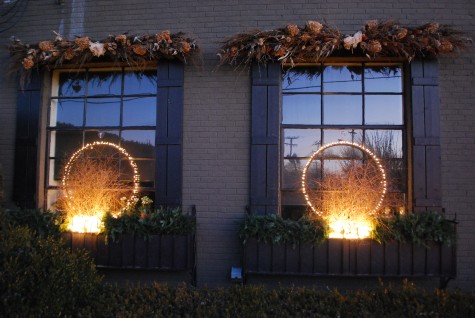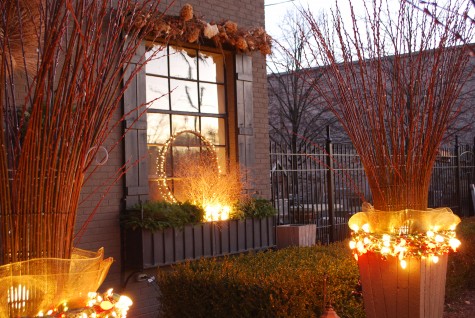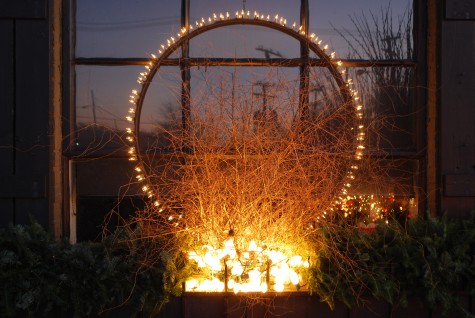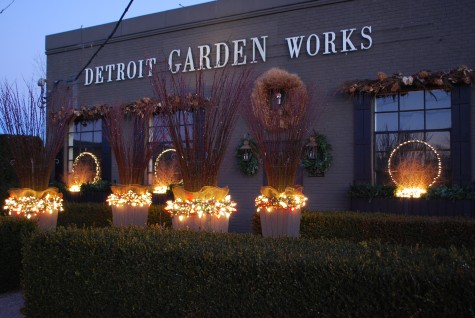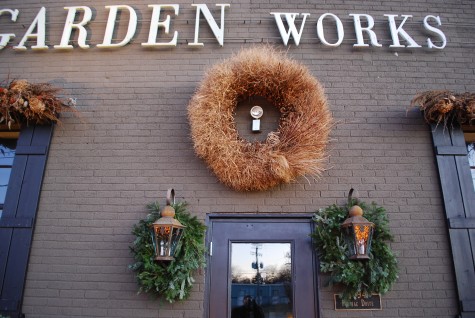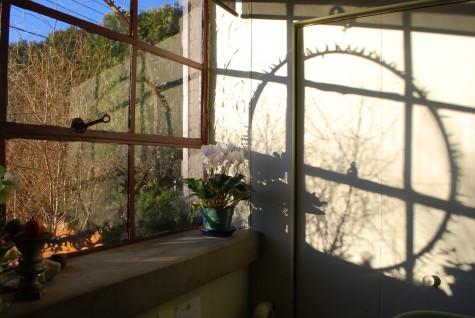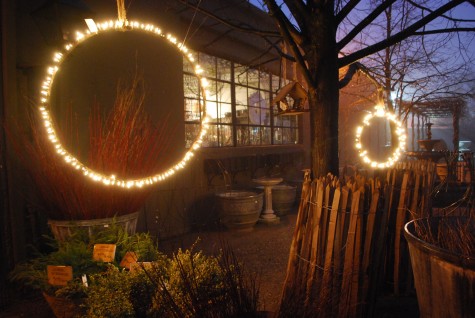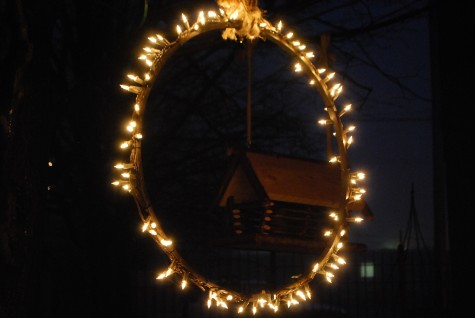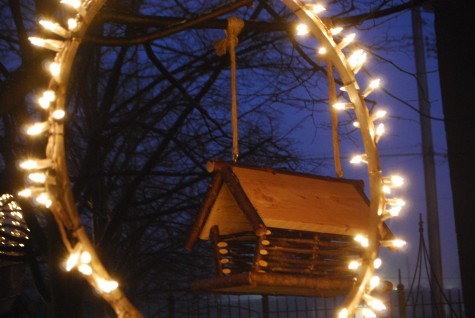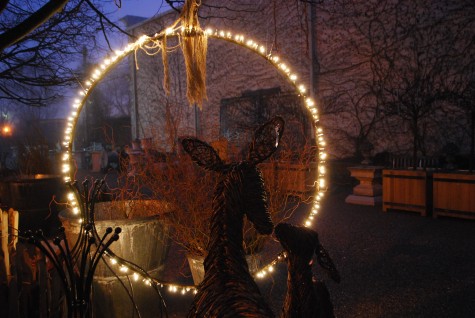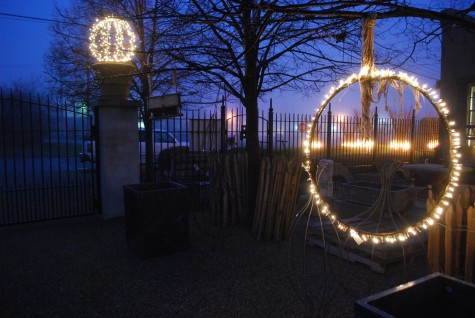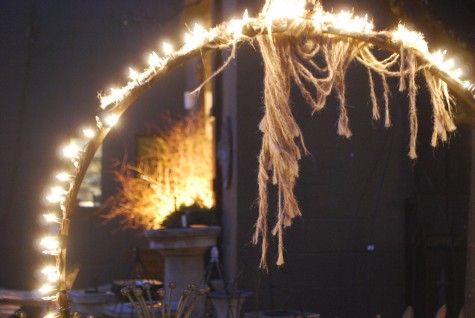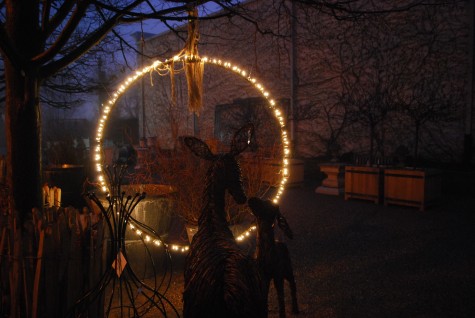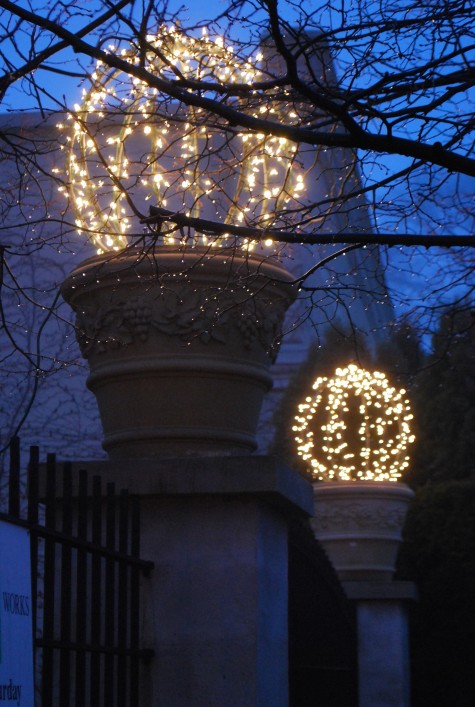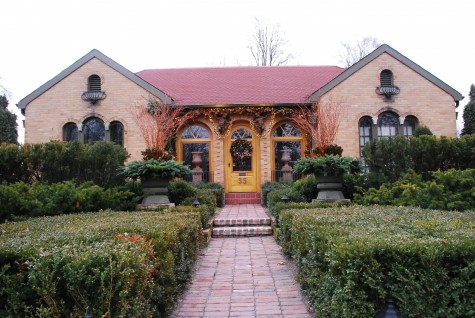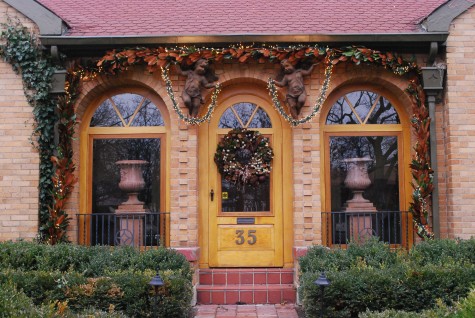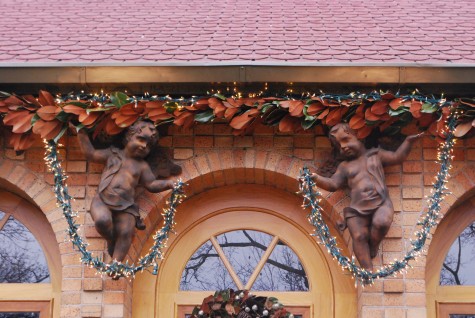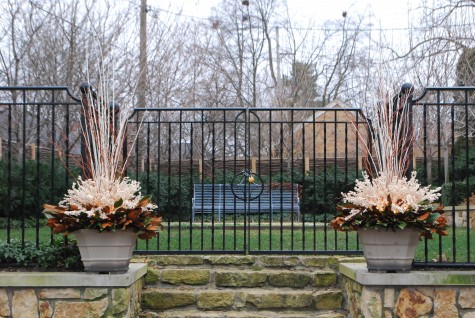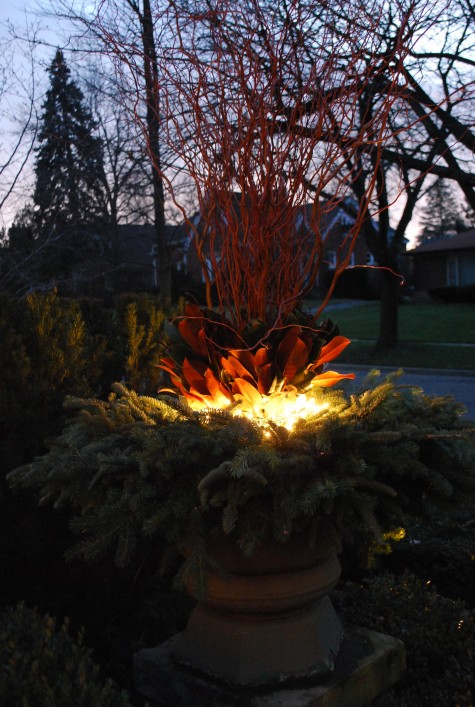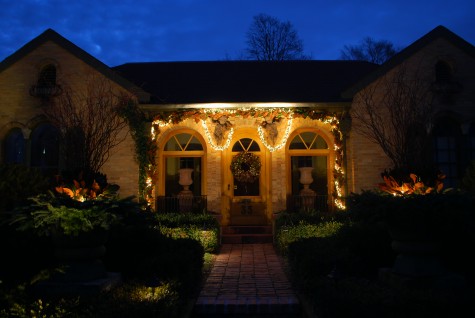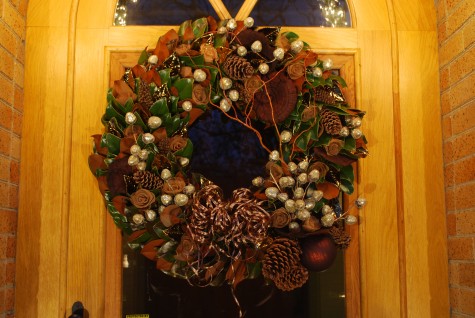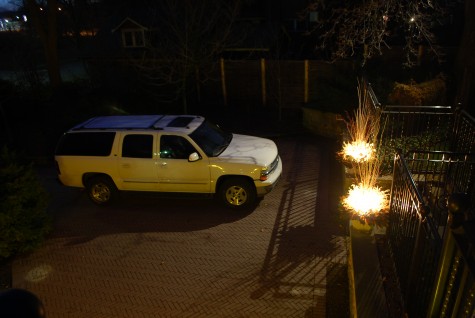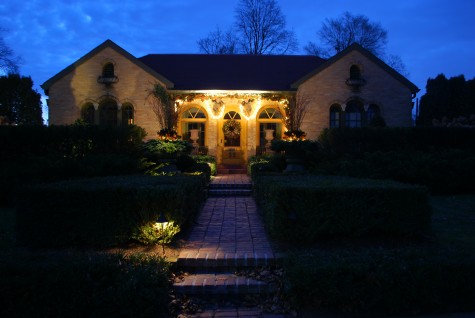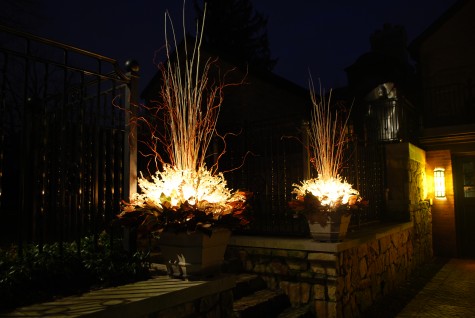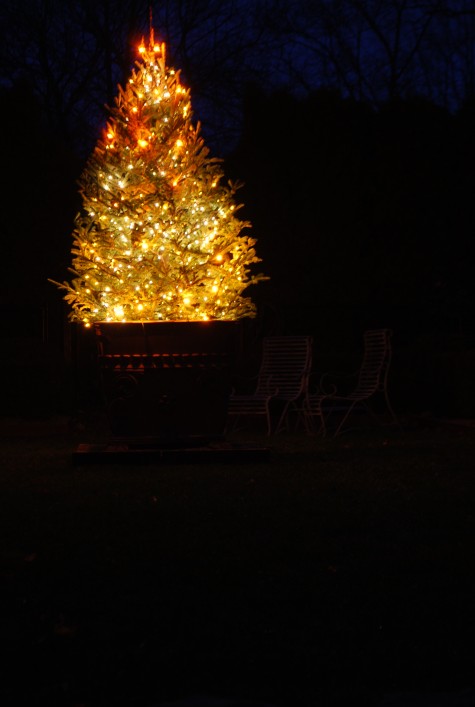Yes, this is the third time that I am writing about the light rings. I think I have good reason. Any design idea begins in a seed-like form. There are no specifics or details-just the idea. That idea has to grow, develop, and mature. Any design idea that that annoys me by the third pass, I try to let go. The annoyance means the idea was not big enough to begin with. After writing yesterday’s essay, I thought I might want to take my own advice. Was there a place that those light rings might add to the shop lighting in a substantial way?
It was not that tough to figure out. The idea had been looking me in the face for weeks. The rings in the window help to fully illuminate the asparagus stems. They light the underside of the medallions above the window.
The circular form frames the asparagus, and is a distinctly contrasting form. Does all of this go through my head? It does. Understanding your own visual process is important to creating a clear and strong expression. It may take longer than one or two or five passes. I like to take the time, even when I have no time, to let a design project speak back to me. What you imagined has to all be there in plain view. If it isn’t, the project isn’t finished.
Though I may have an idea which organizes a project, I rarely am able to design start to finish in one fell swoop. My clients are by and large patient people. If they are not, it is just part of my job to explain how patience can make a satisfactory project supremely satisfying.
I did not mention the greens around the lights, which I added halfway through the project. They are cozy looking, and they repeat the green in the boxes in another place, and on another level. The greens mediate between the lights, and the sticks. They frame the door in a friendly way. They have a circular, wreath-like shape.
The shop holiday decor now has a level of finish that keeps on pleasing my eye. This is my view, many times over in the course of a day, or a week. This makes the resolution of that view important to me. Those light rings, as simple as they are, add a lot to the view. The steel topiary forms in the pots to which the willow is attached, and the steel topiary forms in the windows add as much to this winter garden as any other element. I wonder how I might apply the same idea to a summer garden here.
The structure of the light rings echo the wreath over the door, and the circles of greens around the lights. circular forms. The lights have pompom tops-I have never really noticed that before. The emergency light inside of the wreath-I notice that all the time. Maybe it is time to paint the housing the same color as the wall.
The light rings in the window have greatly improved the view from inside-this I did not anticipate. The windowsill behind my desk has a totally different look now. It is a look, with structure.
What began with the willow over the topiary forms has now come full circle.
